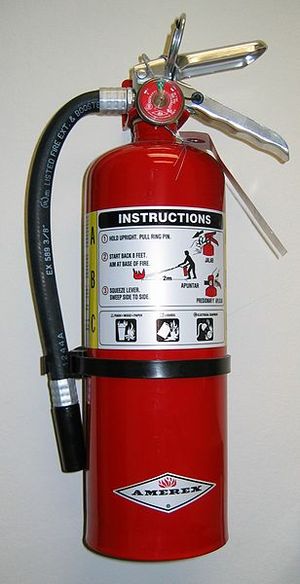A
fire extinguisher is a handheld, typically cylindrical, device used to extinguish small
fires. Such devices contain a fire-suppressive agent, either under constant pressure or with the ability to quickly pressurize, and are used by spraying this suppressive agent over the base of a fire, smothering the fire. Modern extinguishers are almost always under constant pressure, but some (especially older types) use a chemical reaction to create a propellant gas. This kind must be turned upside-down when used to create the needed pressure. Fire extinguishers are generally used in an emergency, and should not be wasted on routine, controlled fires (such as a
campfire).
Modern fire extinguishers are rated for the types of fires they are effective against:
- Class A: ordinary flammable solids, such as wood and paper.
- Class B: flammable liquids, such as grease, oil, and gasoline.
- Class C: electrical fires.
- Class D: flammable metals, such as titanium or magnesium.
The steps in correct use of a fire extinguisher can be remembered by the acronym P.A.S.S.: Pull, Aim, Squeeze, Sweep.
See also[edit]
